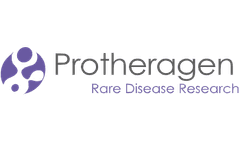Refine by
Leukemia Articles & Analysis
64 articles found
This is crucial for biologics like L-asparaginase (Oncaspar®), where PEGylation reduces hypersensitivity reactions in leukemia patients. 3. Improved Stability and Solubility PEG's hydrophilic nature enhances drug solubility, particularly for poorly water-soluble compounds. ...
A major breakthrough occurred with the FDA approval of Venetoclax (ABT-199), a BCL2-selective inhibitor used in the treatment of chronic lymphocytic leukemia (CLL). Venetoclax works by mimicking BH3-only proteins, thereby displacing pro-survival BCL2 proteins and triggering apoptosis in cancer cells. In 2020, a study published in the New England Journal of Medicine demonstrated ...
This immunotherapy has shown remarkable success, particularly in hematologic malignancies such as acute lymphoblastic leukemia and certain types of lymphoma. However, the complexity and high costs associated with CAR-T development have prompted researchers and companies to seek more efficient and effective approaches. ...
It allows for the simultaneous detection of gene rearrangements and the expression of corresponding proteins, helping in the characterization of specific subtypes of leukemia and lymphoma. Furthermore, it sheds light on the interplay between genetic abnormalities and protein expression, offering insights into potential therapeutic targets. ...
Certain researchers joined hematopoietic stem cells (HSC) with platelets modified with anti-PD-1 antibodies (aPD-1) and delivered them back into mice with leukemia through intravenous injection. The HSC-platelet-aPD-1 conjugate reached the bone marrow to release aPD-1 locally which boosted the anti-leukemia immune response by increasing active T cells and ...
Immunotherapy in Leukemia Treatment Immunotherapy represents a paradigm shift in the treatment of leukemia. ...
This method, known as CAR-T cell therapy, has shown remarkable success in treating certain types of leukemia and lymphoma, offering a potential cure where traditional therapies have failed. ...
Discover how matched tumor-normal sequencing can help clinical researchers detect the somatic origin of variants with certainty. In the era of precision oncology, it has become increasingly common for patients diagnosed with cancer to undergo tumor sequencing. Identifying the mutations that make up a tumor’s genomic landscape can help guide selection of targeted therapies and inform ...
In healthcare, clonality analysis is crucial in the diagnosis, prognosis, and treatment planning of cancers, particularly leukemia and lymphomas. By mapping the clonal architecture of tumors, healthcare providers can make informed decisions regarding treatment options and predict patient outcomes. ...
Walker-Warburg syndrome, acute leukemia and muscular dystrophy-dystroglycanopathy, type a, 1 are all related to chromosome 9 inversion. ...
In healthcare, clonality analysis is crucial in the diagnosis, prognosis, and treatment planning of cancers, particularly leukemia and lymphomas. By mapping the clonal architecture of tumors, healthcare providers can make informed decisions regarding treatment options and predict patient outcomes. ...
Cancer models, especially those of breast cancer and leukemia, have been instrumental in understanding the disease's biology, its dynamic interaction with the microenvironment, and screening potential therapeutic drugs. ...
Diseases Associated with CD19 CD19 is implicated in various significant diseases, including: 1) B-Cell Lymphoma: B-cell lymphoma, a type of leukemia and lymphoma arising from lymphoid tissue, shows overexpression of CD19 on the surface of B cells in certain patients. ...
The functionally acquired somatic mutation of Jak1 has been found in adult acute lymphoblastic leukemia. Somatic activating mutations have been shown to be present in pediatric acute lymphoblastic leukemia (ALL) patients. ...
Cancer models, especially those of breast cancer and leukemia, have been instrumental in understanding the disease's biology, its dynamic interaction with the microenvironment, and screening potential therapeutic drugs. ...
TSLP and cancer New functions of TSLP have been discovered in the induction and progression of various tumors, including solid tumors such as breast, colon, and pancreatic cancers, as well as hematological malignancies like B-cell acute lymphoblastic leukemia (B-ALL). Additionally, TSLP signaling has been shown to have a protective effect against skin-derived tumors, indicating ...
Mylotarg, the first ADC approved by the FDA for the treatment of acute myeloid leukemia, uses calicheamicin conjugated with the anti-CD33 monoclonal antibody through the side chain of lysine. ...
They generated DasatiLink-1 through the linker conjugation of two known inhibitors of the leukemia protein BCL-ABL1 (dasatinib and asciminib). Since each drug binds a different pocket on the target protein, the researchers reasoned that the tethered version could anchor itself at the two points of contact, like inserting a double-pointed key into two locks, enhancing its ...
Another study also confirmed that tetrahydrocurcumin has anti-tumor activity in vivo and in vitro, can effectively reduce colon cancer carcinogenesis, increase leukemia cell death, and inhibit cancer cell metastasis. 8.Antidepressant Effects Wen Caixia et al. studied the antidepressant effect of tetrahydrocurcumin by forcing mice to swim, and the results showed that different ...
The real ADC was not approved for marketing by the US FDA until 2000, that is, Wyeth's gemtuzumab, in which the antibody is a recombinant humanized CD33 monoclonal antibody conjugated with the cytotoxin calicheamicin for the treatment of acute myeloid leukemia. However, through a large number of clinical studies, it was found that it could not improve the survival rate of ...













